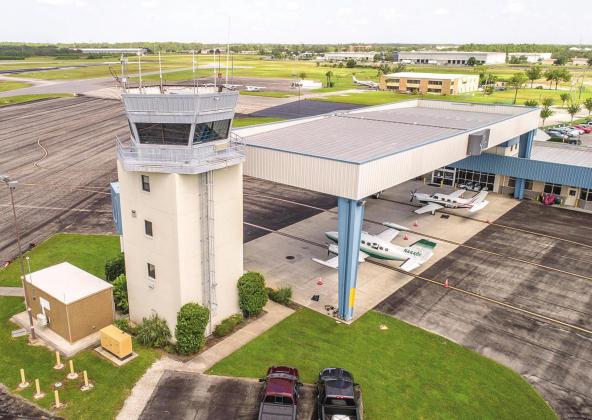Kissimmee Gateway Airport celebrating 80 years
Growing from an U.S. Air Force airfield prior to World War II to now generating more than $170,000 annually for Osceola County, the Kissimmee Gateway Airport is flying high at age 80.
As part of the birthday celebration, the public can take part in planned events such as a virtual exhibition of the airport’s rich history, hosted by the Osceola Historical Society, or take flight in a historic World War II aircraft like a P-51 Mustang at the airport’s warbird museum.
The 80th anniversary celebration will continue through 2020.
“This is an amazing milestone for us,” said Shaun Germolus, airport aviation director in a city of Kissimmee press release. “What started as an Army airfield in 1940 is now a thriving general aviation airport and a valuable asset to the region.”
Because of the amount of business the airport does each year, the Federal Aviation Administration has upgraded its rating from a municipal airport to a national municipal airport, said Kissimmee Mayor Jose Alvarez.
“We bring over $170,000 in revenue to the county each year,” said Alvarez, adding that it could be even closer to $190,000.
Former airport director Terry Lloyd led operations for 19 years, between 2000 and 2019. He said what really helped the airport take off was the growth of Orlando and the business conventions in Orange and Osceola counties. It propelled more corporate aviation coming into the Orlando area.
“Kissimmee was in a great location to serve that business convention market,” Lloyd said.
The airport also was able to implement infrastructure to accommodate the new line of traffic.
One game-changer was implementing the Instrument Landing System (ILS), in 2007, which allows pilots to land in stormy weather.
“The difficulty for Kissimmee was we really have good flying weather a large percentage of the year, unfortunately our bad flying weather is January, February and March, which is the height of the convention and tourist season,” Lloyd said.
The ILS is basically two radio beacons on a gauge in the cockpit. One tells the pilot the angle they are coming in at, whether you are coming in to steep or too shallow. The other tells the pilot where the aircraft is on the centerline of the runway. When the two intersect to form an “X,” the pilot is “flying the line,” and can land, Lloyd added.
“It allows you to do that without having to be able to see the runway to a certain point,” he added. Another asset
Another asset was the political will of the Kissimmee City Commission. Commissioners were willing to deal with some of the noise complaints from residents, which was never really a big problem, Lloyd said.
They also listened to business owners and only designated developed tax revenue to airport projects that would help benefit them.
“They (commissioners) didn’t just go by what airport staff was telling them,” Lloyd said. “They went by what they were hearing from business owners and people benefitting from that kind of traffic coming to the airport.”
But there were hiccups and challenges along the way. Lloyd saw Hurricane Charley in 2004 mangle the airport. There was heavy physical damage to the exterior of the buildings, but luckily the storm did not weaken the foundation of the structures.
“It was a temporary blip,” he said.
Far worse was the Great Recession in 2008, Lloyd noted.
“There were some businesses that didn’t make it through that,” he said.
Today, the airport is now helping with job creation with annual salaries of from $45 to $48,000 a year, Alvarez said.
Alvarez noted that one of the biggest question aviation companies ask before they locate in Osceola is where would their workforce be coming from.
One section of the airport is a designated education area with different aviation schools training the pilots, mechanics and other positions of the future.
“We are able to tell the companies that we are actively creating their workforce and that has made it much easier to attract them into the airport,” Alvarez said.
Currently, the city is converting a golf course at the south end of the airport into a 100-acre industrial airpark, which would house commerce catering to the air travel industry.
“Again, always thinking of creation of more jobs and brining in more revenue to the county,” Alvarez said.
The city is also trying to obtain a grant from the FAA to build a new air tower.
“I feel we are very close now to be able to get that grant and once we have a new tower, we’ll be rated higher,” Alavarez said.
To learn more about the 80th anniversary celebration and what events are scheduled for this year, visit www.FlyKissimmee.com/Celebrate80.




